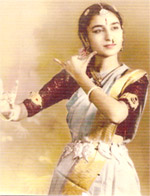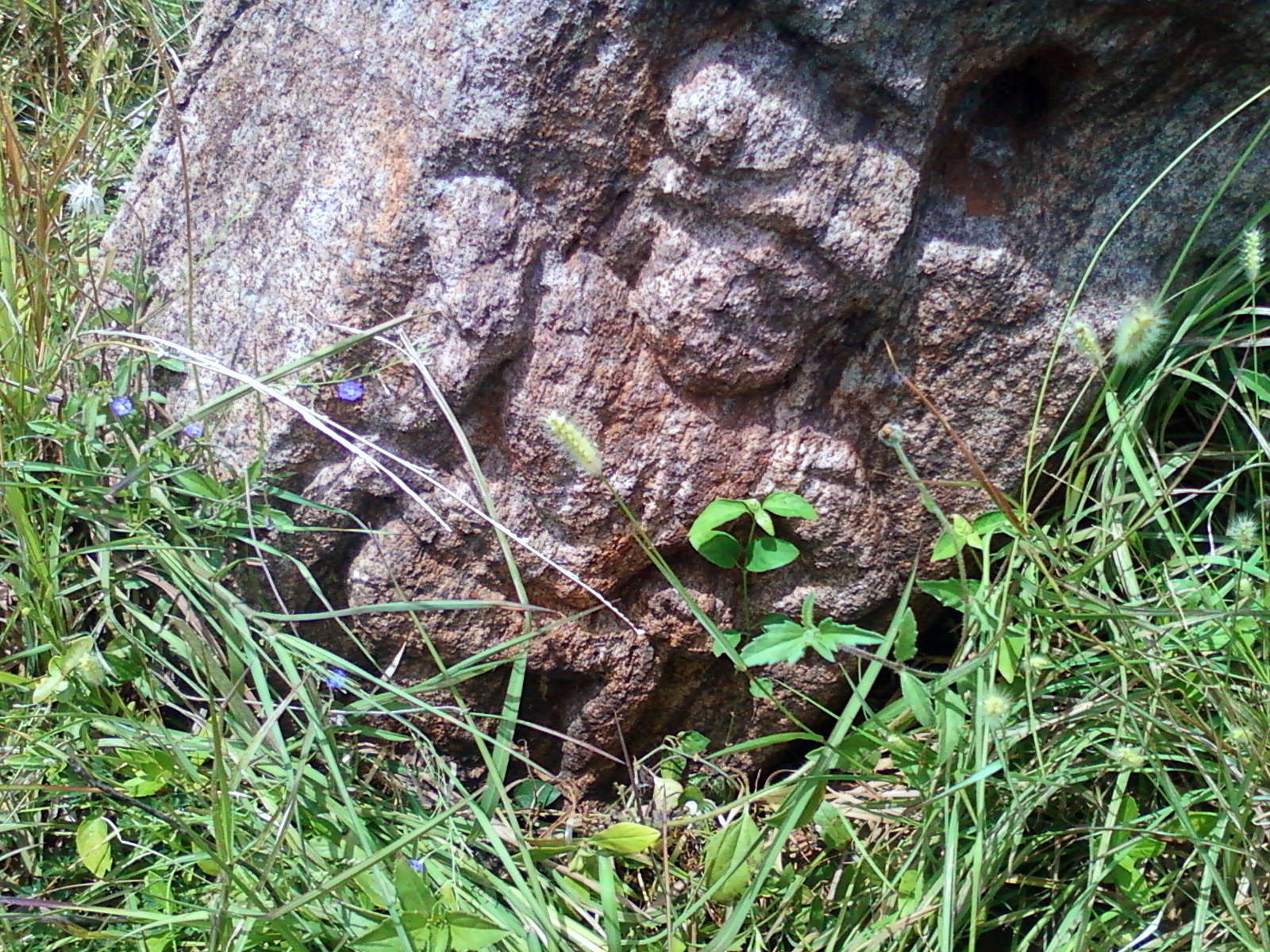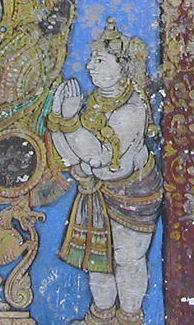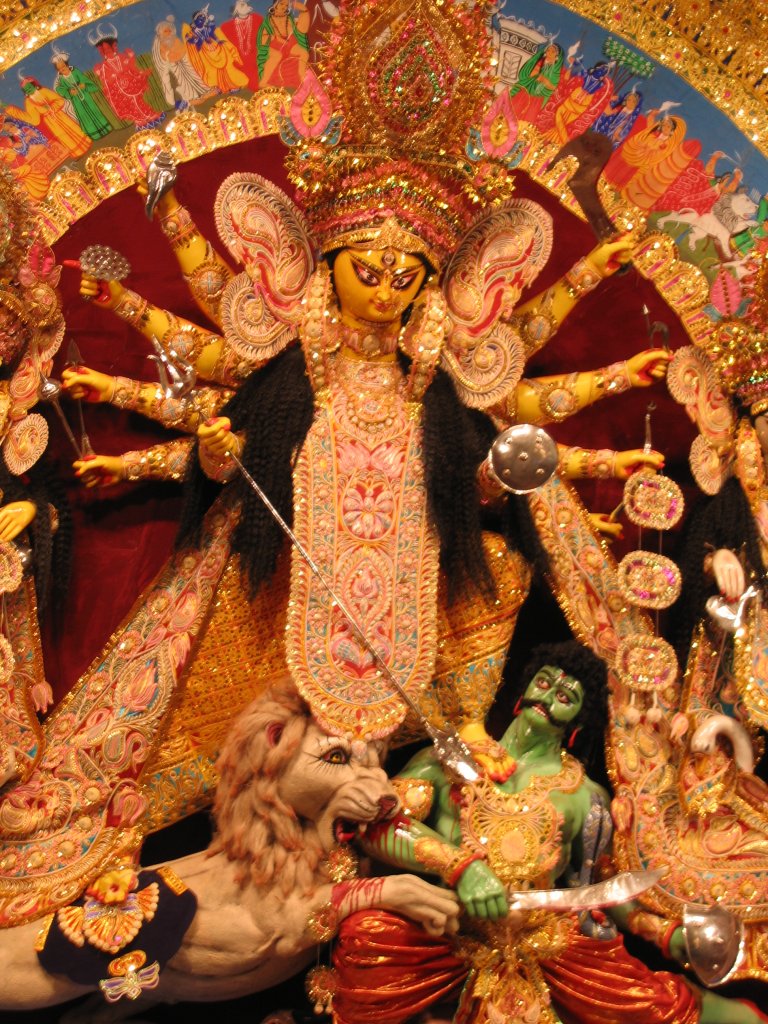|
Uma Rama Rao
K. Uma Rama Rao ( te, శ్రీమతి డాక్టర్ ఉమా రామా రావు born Uma Maheshwari on 4 July 1938 – 27 August 2016) was an Indian Kuchipudi dancer, choreographer, research scholar, author and dance teacher. She was also the Founder & Director of Lasya Priya Dance Academy, established in 1985 in Hyderabad, India. In 2003, she was awarded the Sangeet Natak Akademi Award for proficiency in Kuchipudi by India's National Academy for Music, Dance and Drama. She is a recipient of the National Senior Fellowship bestowed by the Department of Culture, Government of India through the Sangeet Natak Akademi. Early life and education She was born on 4 July 1938 as "Uma Maheswari" to Dr. V. V.Krishna Rao and Sowbhagyam in a 'Vaddadi' family from Visakhapatnam in Andhra Pradesh. Encouraged by her family, that has a background of distinguished scholars with a keen interest in literature, music and dance, she started training in dance from the age of ... [...More Info...] [...Related Items...] OR: [Wikipedia] [Google] [Baidu] |
Visakhapatnam
, image_alt = , image_caption = From top, left to right: Visakhapatnam aerial view, Vizag seaport, Simhachalam Temple, Aerial view of Rushikonda Beach, Beach road, Novotel, Novotel Visakhapatnam, INS Kursura (S20), INS Kursura submarine museum, Vizag skyline, Kambalakonda wildlife sanctuary , etymology = , nickname = The City of DestinyThe Jewel of the East Coast , image_map = , map_caption = , pushpin_map = India Visakhapatnam#India Andhra Pradesh#India#Asia#Earth , pushpin_label_position = left , pushpin_map_alt = , pushpin_map_caption = , coordinates = {{coord, 17, 42, 15, N, 83, 17, 52, E, display=inline,title , subdivision_type = Country , subdivision_name = {{flag, India , subdivision_type1 = States and union territories of India, State , subdivision_name1 = Andhra Pradesh , subdivision_type2 = ... [...More Info...] [...Related Items...] OR: [Wikipedia] [Google] [Baidu] |
Prahlada
Prahlada () is an asura king in Hindu mythology. He is known for his staunch devotion towards the preserver deity, Vishnu. He appears in the narrative of Narasimha, the man-lion avatar of Vishnu, who rescues Prahlada by slaying his wicked father, Hiranyakashipu. Prahlada is described as a saintly boy, known for his innocence and bhakti to Vishnu. Despite the abusive nature of his father, Hiranyakashipu, he continues to worship Vishnu. He is considered to be a ''mahājana'', or great devotee, by followers of Vaishnava traditions. A treatise is accredited to him in the Bhagavata Purana, in which Prahlada describes the process of his loving worship towards Vishnu. The majority of stories in the Puranas regarding him are based on the activities of Prahlada as a young boy, and he is usually depicted as such in paintings and illustrations. Legend Prahlada was born to Kayadhu and Hiranyakashipu, an evil daitya king who had been granted a boon that he could not be killed off by ... [...More Info...] [...Related Items...] OR: [Wikipedia] [Google] [Baidu] |
Thanjavur
Thanjavur (), also Tanjore, Pletcher 2010, p. 195 is a city in the Indian state of Tamil Nadu. Thanjavur is the 11th biggest city in Tamil Nadu. Thanjavur is an important center of South Indian religion, art, and architecture. Most of the Great Living Chola Temples, which are UNESCO World Heritage Monuments, are located in and around Thanjavur. The foremost among these, the Brihadeeswara Temple, is located in the centre of the city. Thanjavur is also home to Tanjore painting, a painting style unique to the region. Thanjavur is the headquarters of the Thanjavur District. The city is an important agricultural centre located in the Kaveri Delta and is known as the ''Rice bowl of Tamil Nadu''. Thanjavur is administered by a municipal corporation covering an area of and had a population of 290,720 in 2011. Roadways are the major means of transportation, while the city also has rail connectivity. The nearest airport is Tiruchirapalli International Airport, located away from th ... [...More Info...] [...Related Items...] OR: [Wikipedia] [Google] [Baidu] |
Shahaji
Shahaji Bhonsale (Pronunciation: �əɦad͡ʒiː c. 1594 – 1664) was a military leader of India in the 17th century, who served the Ahmadnagar Sultanate, the Bijapur Sultanate, and the Mughal Empire at various points in his career. As a member of the Bhonsle clan, Shahaji inherited the Pune and Supe jagirs (fiefs) from his father Maloji, who served Ahmadnagar. During the Mughal invasion of Deccan, he joined the Mughal forces and served under Emperor Shah Jahan for a short period. After being deprived of his jagirs, he defected to the Bijapur Sultanate in 1632 and regained control over Pune and Supe. In 1638, he received the jagir of Bangalore after Bijapur's invasion of Kempe Gowda III's territories. He became the chief general of Bijapur and oversaw its expansion. He brought the house of Bhosale into prominence. He was the father of Shivaji, the founder of the Maratha Empire. The princely states of Tanjore, Kolhapur, and Satara were ruled by Shahaji's descendants. Early ... [...More Info...] [...Related Items...] OR: [Wikipedia] [Google] [Baidu] |
Potti Sreeramulu Telugu University
The Potti Sreeramulu Telugu University (PSTU) is one of the few Indian language universities in India. University It was established as "Telugu University" on 2 December 1985 through an Act of Legislation (Act No. 27 of 1985) by the State Legislature of the-then united Andhra Pradesh with headquarters at Hyderabad, Andhra Pradesh, Hyderabad and satellite campuses at Srisailam and Rajahmundry, Rajamahendravaram. The School of Folk and Tribal Lore was established at Warangal during the year 1994. This university was founded with the broad objectives of serving the cause of the Telugu people, both within the State and outside. For this purpose, the state government has merged the Sahitya, Music of India, Sangeet, Nataka, Nritya and Lalita Kala Academies, International Telugu Institute and Telugu Bhasha Samiti into the university. Thus, the university was established to function as a central organization for teaching and research in Language and Literature, History and Culture, Fine ... [...More Info...] [...Related Items...] OR: [Wikipedia] [Google] [Baidu] |
Tyagaraja
Thyagaraja (Telugu: త్యాగరాజ) (4 May 1767 – 6 January 1847), also known as Thyāgayya and in full as Kakarla Thyagabrahmam, was a composer and vocalist of Carnatic music, a form of Indian classical music. Tyagaraja and his contemporaries, Shyama Shastri and Muthuswami Dikshitar, are regarded as the Trinity of Carnatic music. Thyagaraja composed thousands of devotional compositions, most in Telugu and in praise of Lord Rama, many of which remain popular today, the most popular being "Nagumomu". Of special mention are five of his compositions called the ''Pancharatna Kritis'' ( "five gems"), which are often sung in programs in his honour, and ''Utsava Sampradaya Krithis'' ( Festive ritual compositions), which are often sung to accompany temple rituals. Tyagaraja lived through the reigns of four kings of the Maratha dynasty — Tulaja II (1763–1787), Amarasimha (1787–1798), Serfoji II (1798–1832) and Sivaji II (1832–1855), although he served none of ... [...More Info...] [...Related Items...] OR: [Wikipedia] [Google] [Baidu] |
Telugu People
Telugu people ( te, తెలుగువారు, Teluguvāru), or Telugus, or Telugu vaaru, are the largest of the four major Dravidian ethnolinguistic groups in terms of population. Telugus are native to the Indian states of Andhra Pradesh, Telangana and the Yanam district of Puducherry. A significant number of Telugus also reside in the surrounding Indian states of Karnataka, Tamil Nadu, Maharashtra, Gujarat, West Bengal, Chhattisgarh, Kerala, and Odisha, as well in the union territory of Andaman and Nicobar Islands. Telugus claim descent from the Andhras, from whom the Telugus inherit their ethnonym. Telugu is the fourth most spoken language in India and the 15th most spoken language in the world. Andhra was mentioned in the Sanskrit epics such as Aitareya Brahmana (by some estimates c. 800 BCE). According to Aitareya Brahmana of the Rigveda, the Andhras left North India from the banks of river Yamuna and migrated to South India. They are mentioned at the time of the d ... [...More Info...] [...Related Items...] OR: [Wikipedia] [Google] [Baidu] |
Padma Bhushan
The Padma Bhushan is the third-highest civilian award in the Republic of India, preceded by the Bharat Ratna and the Padma Vibhushan and followed by the Padma Shri. Instituted on 2 January 1954, the award is given for "distinguished service of a high order...without distinction of race, occupation, position or sex." The award criteria include "service in any field including service rendered by Government servants" including doctors and scientists, but exclude those working with the public sector undertakings. , the award has been bestowed on 1270 individuals, including twenty-four posthumous and ninety-seven non-citizen recipients. The Padma Awards Committee is constituted every year by the Prime Minister of India and the recommendations for the award are submitted between 1 May and 15 September. The recommendations are received from all the state and the union territory governments, as well as from Ministries of the Government of India, Bharat Ratna and Padma Vibhushan a ... [...More Info...] [...Related Items...] OR: [Wikipedia] [Google] [Baidu] |
Katyayani
''Katyayani'' (कात्यायनी) is an aspect of Mahadevi and the slayer of the tyrannical demon Mahishasura. She is the sixth among the Navadurgas, the nine forms of Hindu goddess Durga who are worshipped during the festival of Navaratri. She is depicted with four, ten or eighteen hands. This is the second name given for Goddess Adi Parashakti in Amarakosha, the Sanskrit lexicon (Goddess Parvati names- Uma, Katyayani, Gauri, Kali, Haimavati, Ishwari). In Shaktism, she is associated with the fierce forms of Shakti or Durga, a warrior goddess, which also includes Bhadrakali and Chandika, and traditionally she is associated with the colour red, as with Goddess Parvati, the primordial form of Shakti, a fact also mentioned in Patanjali's Mahabhashya on Pāṇini, written in 2nd century BCE. She is first mentioned in the Taittiriya Aranyaka part of the Yajurveda. Skanda Purana mentions her being created out of the spontaneous anger of Gods, which eventually led to slay ... [...More Info...] [...Related Items...] OR: [Wikipedia] [Google] [Baidu] |
Shiva
Shiva (; sa, शिव, lit=The Auspicious One, Śiva ), also known as Mahadeva (; ɐɦaːd̪eːʋɐ, or Hara, is one of the principal deities of Hinduism. He is the Supreme Being in Shaivism, one of the major traditions within Hinduism. Shiva is known as "The Destroyer" within the Trimurti, the Hindu trinity which also includes Brahma and Vishnu. In the Shaivite tradition, Shiva is the Supreme Lord who creates, protects and transforms the universe. In the goddess-oriented Shakta tradition, the Supreme Goddess ( Devi) is regarded as the energy and creative power (Shakti) and the equal complementary partner of Shiva. Shiva is one of the five equivalent deities in Panchayatana puja of the Smarta tradition of Hinduism. Shiva has many aspects, benevolent as well as fearsome. In benevolent aspects, he is depicted as an omniscient Yogi who lives an ascetic life on Mount Kailash as well as a householder with his wife Parvati and his three children, Ganesha, Kartikeya and A ... [...More Info...] [...Related Items...] OR: [Wikipedia] [Google] [Baidu] |
Mandakini (actress)
Mandakini (born Yasmeen Joseph; 30 July 1963) is an Indian former actress. She is best remembered for her lead role in the 1985 popular film ''Ram Teri Ganga Maili''. Early life Mandakini was born on July 30, 1963, in Meerut as Yasmeen Joseph to a British father and a Kashmiri mother. At the young age of 22, she was discovered by legendary film director Raj Kapoor and given the screen name "Mandakini". Film career Mandakini got her first movie in the Hindi film industry when she was cast in the lead role in the 1985 movie ''Ram Teri Ganga Maili'' by film producer-director Raj Kapoor opposite his youngest son Rajiv Kapoor. The film was a blockbuster, and it earned Mandakini a Filmfare nomination as Best Actress. She caused a stir after she was seen partially nude in two sequences of the film. She then acted in a few more successful films, such as '' Dance Dance'' with Mithun Chakraborty, ''Kahan Hai Kanoon'' with Aditya Pancholi and ''Pyaar Karke Dekho'' with Govinda, but could ... [...More Info...] [...Related Items...] OR: [Wikipedia] [Google] [Baidu] |
Rukmini
Rukmini ( sa, रुक्मिणी, , ) is a Hindu goddess and the first queen and chief wife of Krishna. In Vaishnava tradition, she is described as Krishna's principal queen in Dvaraka, as well as the chief of his wives. She is an incarnation of the goddess of prosperity, Lakshmi. The goddess is regarded to be the chief or principal consort of Krishna in various pieces of literature and is venerated primarily in Warkari and Haridasa tradition, and additionally in Sri Vaishnavism where Lakshmi-Narayana are revered and worshipped. Rukmini is mainly worshipped in Maharashtra and South India. The people of Maharashtra venerate her with Vithoba (a regional form of Krishna) and call her Rakhumai. In South India, she is worshipped along with Krishna and his other primary consort Satyabhama. Etymology and epithets The name ''Rukmini'' is derived from the Sanskrit word ''Rukma'' which means 'Radiant', 'Clear' or 'Bright'. The name can also mean 'decorated with gold ornamen ... [...More Info...] [...Related Items...] OR: [Wikipedia] [Google] [Baidu] |








